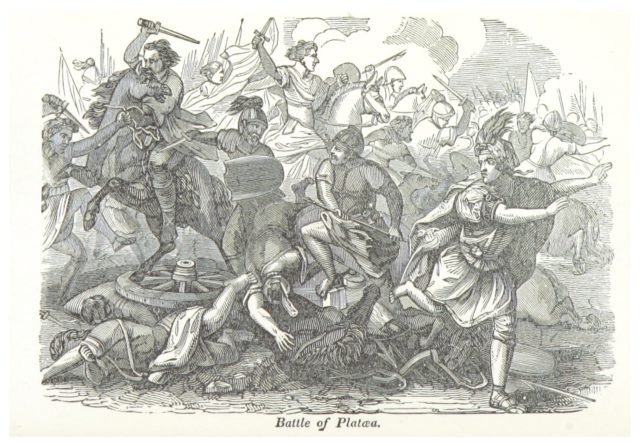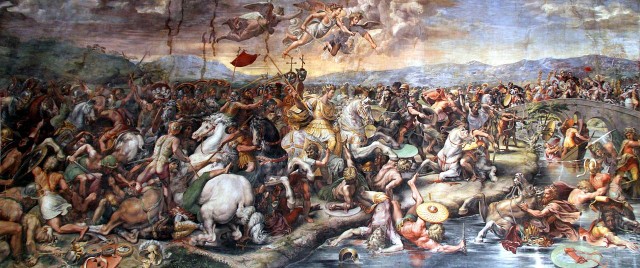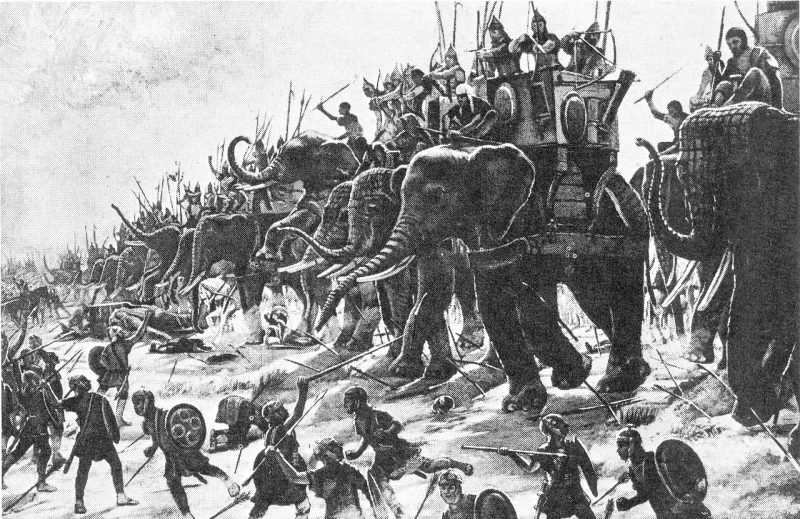Looking back into ancient times and warfare, we chose three victories, which are of fundamental significance. The outcome of these victories was decisive for the future and development of the mightiest ancient empires. They hold great importance for centuries to come. Which are the three key victories of the ancient world?
Battle of Plataea, 479 BC – Greek-Persian wars

In this battle between the Hellenic alliance and the Persian Empire, the outcome would change the entire war.
What happened?
After Xerxes lost at Salamis, he left for his empire. Winter was coming with promises to be harsh, and he had already suffered tremendous losses, which shrunk both his naval force and supplies. Leaving the Greek realms, he ordered his general Mardonius to stay behind with some 100,000 men.
However, the Greeks were not willing to wait for Xerxes to gather reinforcements and resupplies. They recruited an army with which to meet the Persian general on the battlefield. After they had done so, they left Peloponnese heading to meet the Persians. The Persians of Mardonius were too not eager to meet the Greeks, so they headed on to Platea to fortify.
When the Greeks reached their destination, they would find the victory was not so easy. Afraid to meet the Persian cavalry out in the open, the Greek phalanx took no decisive action for about 11 days. During that time, the Persians did their best to interrupt the supplies for the Greek army.
For this reason, after those days passed, the Greeks began to starve and decided to retreat. The withdrawal caused panic in the midst of the army, which was a perfect moment for the Persians to strike.
Mardonius led his army to attack the withdrawing Greeks, only to meet unwavering resistance. In a rigid counterattack, the Greek heavy infantry routed the Persians. The general Mardonius was killed on the battlefield, the surviving warriors from the army besieged in their camp. The siege ended quickly, and the defeated Persians were either killed or enslaved.
Why is the Battle of Plataea a key victory of the ancient world?
The defeat of the Persians ended their campaign in Hellas forever. Until the very end of the Greek-Persian wars, the Persians would not be able to threaten the Greek lands. The battles would be fought on their soil, turning them from invaders into invaded. They would suffer some defeats at sea. Among the well-known ones are the battles of Mycale and Salamis.
Battle of Zama, 202 BC – Rome vs. Hannibal
The history of the great leader of antiquity, Hannibal, is well known. A thorn in the side of the Roman Republic, his military achievements were a significant threat to the Empire. Although his campaign in the lands of the Republic did not gain victory, his influence was strong. This was why the Romans could not have Carthage continue this insolence.
What happened?
Hannibal was forced to return to North Africa and defend Carthage from the army of Scipio. The two armies met on the field near Zama. Hannibal’s initial attack was with war elephants. However, Scipio had anticipated that this would happen and found a way to scare the elephants. As a result, the animals ran wild and destroyed the left wing of the Carthaginian army.
The Romans then used the confusion to their advantage. The Roman cavalry charged the Carthaginian cavalry. The army of Carthage was quickly routed, and the last survivors of their cavalry were massacred. Meanwhile, the clash between the infantry was not turning in favor of the army of Carthage. The Roman infantry destroyed more than two-thirds of the enemy.
Although Hannibal somehow managed to regroup his men into a strong central defensive line, the outcome soon became clear. The Roman cavalry attacked the defenders from behind, securing an overwhelming victory for the Republic.
Why is the Battle of Zama a key victory of the ancient world?
As a result, the balance of power was tilted in favor of Rome. Carthage was on its knees, forever unable to question the authority and power of the Roman Republic. The Hellenistic countries were soon also bent to the will of Rome, making Rome the dominant authority, and allowing it to quickly expand its borders.
Battle of Milvian Bridge, 312 – War of the Tetrarchy

What happened?
The vast Roman Empire was divided into three parts by Emperor Diocletian. Soon a bloody rivalry between two of the rulers, Maxentius and Constantine, would change Roman history. Maxentius’ desire to remove Constantine from his position and claim the title of the sovereign ruler of the Empire would turn against him.
The final phase of the feud would prove the inefficiency of the model government of Diocletian. Constantine’s army was headed to Rome to meet with the forces of Maxentius, who was having great difficulties finding support. The Empire was against the rule of Maxentius, and Constantine soon was before the walls of Rome.
Maxentius, in fear of losing all authority, decided to attack Constantine head-on instead of defending behind the safety of Rome’s walls.
Maxentius was confident in his numerical superiority and met the forces of Constantine on the other side of the river, near the Milvian bridge. The bridge itself was damaged, so he used an alternative one. That bridge’s collapse in the middle of battle, during the fierce push of Constantine’s forces, was decisive. The army of Maxentius was annihilated, and he died a honorless death.
Why is the Battle of Milvian Bridge a key victory of the ancient world?
Constantine’s victory made him the sole ruler of the Western Roman Empire, and soon the entire Empire. His triumph led to several significant changes, which would remodel the empire from the core. Being influenced by Christianity before the battle, he legalized it, giving the religion the opportunity to blossom in the biggest Empire of the ancient world. The sign of Christianity not long after was turned to a symbol of the Late Roman Empire and its Byzantine period.
